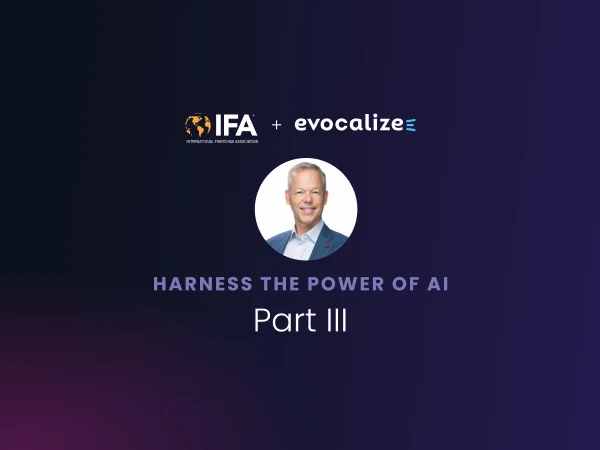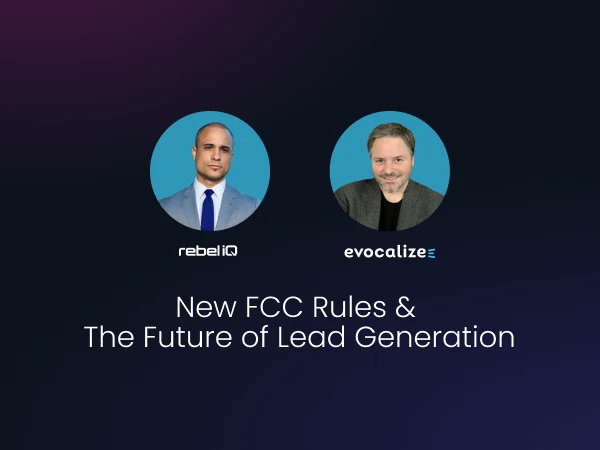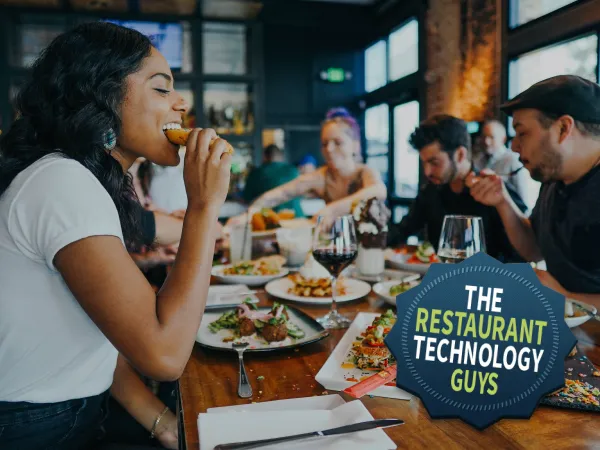Part 1: Foundations of AI for franchises
Dan Monaghan, Chair of the International Franchise Association and founder of Clear Summit Group, and Nick Markman, Director of Product at Evocalize, hosted an insightful webinar exploring the transformative potential of artificial intelligence (AI) for franchises.
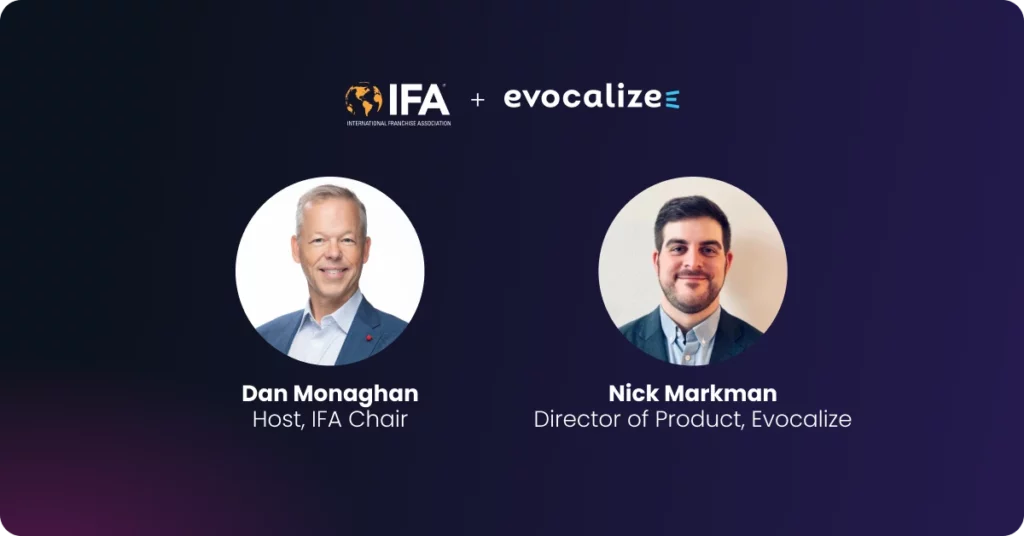
They provided an overview of generative AI tools like ChatGPT and DALL-E that can generate human-like text, images, audio, and more. The speakers highlighted how these technologies introduce new possibilities for automation, enhanced customer experiences, accelerated innovation, and competitive advantage.
Throughout the webinar, numerous examples were shared demonstrating AI applications across marketing, operations, training, and other business functions. Dan and Nick emphasized the need for franchise leaders to understand, experiment with, and implement these emerging technologies to future-proof their organizations.
Anyone interested in leveraging AI to streamline processes, reduce costs, and unlock value from data would greatly benefit from watching the webinar or reading the transcript.
For a quick summary of the webinar, go here. You can watch part 2 of the webinar series here.
Transcript
Nick Markman:
Hello everyone, and welcome to the first of three webinars around the use of AI for franchises. As a quick intro, my name is Nick Markman. I lead AI product development out of Evocalize where we make local paid marketing push-button easy for their franchisees.
We’re the only platform that leverages AI to not only automate paid marketing based on data, but also to optimize spend across Google, Facebook, Instagram, TikTok, and more — all from one centralized platform, helping franchises achieve the best results with their marketing dollars. Today we’re really excited to have the pleasure of hearing from Dan Monaghan.
Dan is the founder of WSI, which is a digital agency franchise system. Dan’s also a longtime volunteer leader at the IFA and the current chair of the IFA Foundation. If you recall, Dan led the IFA session on AI at the IFA Convention in Vegas this year, which was one of our highest rated and highest attended of the entire show.
Dan’s gonna be taking us through part one of our AI series, which we’ve called, Foundations of Artificial Intelligence. It’s part one out of the three-part series we’re gonna be doing. Today’s session has amongst the highest registrations we’ve ever seen for an IFA webinar. It’s a really exciting topic, really relevant right now. Requested from you all in the community. So we’re really excited to get started and dive right in.
So with that, I’ll turn it over to Dan.
Dan Monaghan:
Well, thanks, Nick. And thanks for Evocalize for sponsoring the IFA, for sponsoring this event. We’ve got a lot of information to cover today, and as Nick said, this is a first of three-part series. We’re gonna be doing another session in July, which is gonna dive deeper into this topic.
And then again, in August where we’ll even go a little bit deeper and collaborate and share together across franchising. So we’re gonna move pretty quickly. It might be like taking a bit of a sip from a fire hose as we move through some of this today, but there is gonna be a recording of this session that’s gonna be shared in advance of the second series as well.
So, you don’t have to vigorously make notes. Throughout the presentation, I think it’s worth noting that we are living in interesting times. There is Victor Hugo at the start of Les Miserable, his novel, he talked about how a revolution is seldom recognized in its time.
Historians look at it. They can see it for what it was. But as it’s happening, oftentimes it’s not recognized. And I would proffer that what we’re living in right now is a revolution that is being born with what we’re calling generative AI. And this whole AI revolution, which we’ll talk about today.
What are some of the other thought leaders in the space saying? I mean, Sundar Pichai from Google says this is one of the most important things humanity has worked on. He’s saying it could be more profound than electricity and fire. Bill Gates and the Wall Street Journal are saying it’s the most revolutionary thing since the microchip or the internet.
I can tell you that, I founded WSI back in 1995, so that was two years before Google. It was really at the birth of the internet. It’s gone on to become the world’s largest digital agency network. But I can tell you that at that time, the energy that we were feeling is not that dissimilar to what we’re experiencing right now.
What is AI?
As people begin to think about how is this actually gonna change society, the world, the economy, business models, etc. and so it is a very interesting time that we’re living in. But I think it helps if we start off by saying like, what is AI and what isn’t it?
I can tell you over the last number of years, almost everything has been labeled AI and most of what has been labeled AI is not really AI. It’s smart software, it’s algorithms. But, that appliance that says AI on it or that software program that said AI probably wasn’t AI.
But on November 30th of last year, the world changed. That was with the launch of ChatGPT by OpenAI, and that is where all of a sudden all of us had access to AI directly.
And as most of us have heard within five days there were over a million users. Within less than two months, there were over a hundred million users. So this has become the fastest-adopted technology in the history of humanity.
And so it is a really big deal, and it’s what I call the democratization of AI because no longer was AI just limited to these large corporations with these massive data science divisions, but you and I could access it as easily as we access a Google search box.
And so this is a really profound shift. So if we just take a little bit of a refresher on what AI is, because it’s been used by businesses for the last six, eight years. I mean, it’s not new. We heard about how AI became the world chess champion. So it’s been around for a little while.
What enabled AI to be possible
What has enabled AI to be possible is two things. Number one, massive data sets. So we heard that buzzword a number of years ago. Big data. So that’s a big part of it. I mean, we create more data today than the history of humanity created up until the year 2000. So we’re living in a world where there’s a lot of data.
And then the second thing we need is massive computing power. And that hasn’t existed historically until the last number of years, and now today it’s up in the cloud. We have cloud computing. So if you put those things together and you use machine learning, which is a program that teaches the machine to learn from the data where it trains itself and it improves over time.
Examples of AI today
What AI is very effective at is spotting patterns and making predictions. So if you think about most of the historical applications of AI, its patterns and predictions. And so if we think about how that’s been used, if we upload a million x-rays into a machine learning system labeled, this is cancer, this isn’t, this is the tumor, this isn’t, over time, it looks at all these things and it learns, and it begins to detect tumors.
There was a study in China a few weeks ago where they said 85% of the tumors were predicted by AI In 18 minutes. Whereas humans only detected 64% in 50 minutes. So right now AI is performing at a level that exceeds radiologists in certain types of tumors.
If we look at the legal industry, we upload a bunch of publicly available precedents or legal rulings. We can now say, with this fact pattern, here is the probability that this judge will settle this case in this way. And so that type of AI has allowed lawyers to make better settlements earlier in the process.
The same with insurance settlements. You know, we can find, it’s like a needle in a haystack. We can find fraud in large amounts of data in audits, through using AI. There’s this whole thing of predictive criminology. They’re now surging police into areas where crimes will occur based on what the data and AI are saying. And so it’s being used in so many areas in business.
Generative AI
But what really has changed the game is the evolution of this thing called generative AI.
And that’s where the world really experienced it with the launch of ChatGPT, because historically, creativity, innovation, these things were uniquely human characteristics, right? Like when you think about innovation and creating new things, that’s what humans did. And now AI is doing this through this thing we call generative AI.
Now that is not absolutely new. The world saw it when with the launch of ChatGPT, but it’s been around for a few years. So you might have first experienced this when you were sending an email through Gmail, right? And Google completed the rest of your sentence. It predicted what you were going to actually say. It created the rest of the sentence for you.
How ChatGPT came to be
And then OpenAI in June of 2020, they actually launched GPT 3, and they made it available to other software companies. And some of the software we’ve been using, like Jasper or Anyword or Fireflies, some of us have used things like that. You look at these almost magical properties of his software, where was that coming from?
It was actually coming from GPT under the hood of that software, but then it was launched to the world as ChatGPT, which is actually GPT 3.5, and that’s what was launched in November.
So, what is ChatGPT?
Well, how was it created?
What they did is they fed in 300 billion words into that machine learning system, or large language model as they call it. So all of Wikipedia, a big chunk of the web, a hundred thousand plus books, and the system became very smart and it learned.
You can kind of think about it like a librarian who has read every book in the library. You don’t need to go to the book anymore because the librarian, librarian has that intelligence in his or her head and so it’s like that librarian has read all that content, so it’s like a smart university grad or a smart librarian that’s read all that content.
How generative AI is being used
Now let’s talk about some examples of how generative AI is being used. ChatGPT is a text example of generative AI, but we can create images with text and I’ll show you some examples of that. We can go from text to speech. Or speech to text.
Some of you might have seen that viral tweet that went viral on Twitter, a number of months back where it was Steve Jobs. It was like he came back to life. It was his voice that was speaking and someone had just sampled his voice, and you can do that in a few seconds with a voice sample.
There was a Joe Rogan episode, which was written by ChatGPT, and there’s something called ElevenLabs, which is an application to go text to speech. And it was like you’re listening to Joe Rogan, but it wasn’t really him.
This is being used for virtual extortions where scammers are trying to call you up and sound like it’s your family. There’s just like lots of things. Technology, whether it’s fire or the atom bomb, there’s good things and bad things that can come out of it.
The same as the case here. Coding, you know, computer programmers are using AI now to write programming code for them.
Video. We can create videos simply by describing the video and text and it cranks out the video. And I’m gonna show you examples of this stuff.
Music, we can actually, through asking it what we want the music to be, it can actually create music.
Examples of ChatGPT
So let’s just dive into a couple of examples. Let’s go to ChatGPT. So you go to chat.openai.com. Everyone can do that. It’s free. You just create an account for yourself. And so how do you use it? You just type in whatever you want. So again, think about a smart university grad, a person who’s read the whole internet and you’re asking them to do something for you.
So in this safe case, I said, “Create a job description for a franchise business coach.” All of a sudden it’s creating it. It’s not pulling it from the internet, it’s not downloading it from Google. It’s creating this on the fly. Now, I could have said, “a tech-savvy business coach.” I could have said, “a sales-driven business coach.” I could have said, “a business coach working remotely”, and it would’ve reflected all of that in the job description.
ChatGPT for franchisees
But let’s not just think about how we can use this ourselves as franchisors. How can we use this with our franchisees? How can we help improve the unit economics of their businesses?
So, one of our businesses is a tutoring business, and the franchisees are often asked, “Can you provide some resources to help the tutor with the tutoring they have to do?”
So in this case, I said, here’s a 10 lesson plan. I said, “Give me a 10 lesson plan for a tutor teaching ninth-grade Shakespeare, including a mock exam.” I could have said, “Give me for a sixth grader”, I could have said, “A 12 lesson.” But it is creating a lesson plan on the fly. Now that speeds up the work of our franchisees, makes the tutoring experience for tutors much easier.
That’s just one example, but think about your business and how it could be used by franchisees.
Another franchisee gets a negative review they got to respond to. So I said, “Write a response to a poor customer review, complaining about bad customer service.” Again, there’s that blank page syndrome where we’re all, when you first start writing anything, you’re like stuck.
I mean, it’s, especially if you’re writing a response to a negative review, that can be tough for franchisees. So this gives them a starting point.
Where are all the other use cases?
I like to use it for professional development. Like, you know, if I’m on a call and somebody references a book that I haven’t read, here I’ll just say “Create a chapter by chapter summary of Good to Great by Jim Collins.”
Now I could say, “Give me a more detailed breakout of chapter one,” and then it’ll give me a much more detailed breakout. But I mean, this is how it could be used in everyday life by all of us. So it’s limited only by your imagination.
Responding to RFPs. We’ve got franchisees in WSI that are responding to RFPs using ChatGPT, writing LinkedIn recommendations. I mean, the best way to get LinkedIn recommendations is to give them, so you could just say to ChatGPT, “Give me a recommendation for someone I worked with at IBM who had a positive attitude” and boom out pops a recommendation that you can give them.
Summarizing legal agreements. “Tell me the top five things I should consider in looking at this lease agreement” or “Highlight all the problems you see with this lease agreement.” Now, again, it’s not a lawyer. This just gives you a running start before you talk to your lawyer. Our in-house legal department uses it regularly to fast track their own work before the lawyers actually do the deeper dive work themselves.
Compare and contrast FTDs. I’ve uploaded three different competitor FTDs and said, “Compare and contrast these FTDs” and it gives me a whole grid in table format of all the differences in the business models, in the royalties, in the support, in everything that is in the legal agreements, etc.
Naming. So for ideation, if you want to name a product, you want to name a campaign or a company, this is very powerful.
I just had this interesting experience a number of months back. We are going through a rebranding process with one of our divisions and we paid an outside agency $40,000 to do a new name and a new branding for that particular company. I woke up in the middle of the night with a name for a new division of another company that we were launching, and I just punched into ChatGPT, “Give me a list of names,” and it came up with 10 names for this new division. Three of them were great. One of them I was able to get the .com on right there and then the middle of the night, like three in the morning, and I went to the link to the US Patent and Trademark Office and found out that the trademark’s available.
So on the one hand, we’re spending $40,000 to rebrand and come up with a name for one company. And on the other hand, ChatGPT does this on the fly in the middle of the night. And you know, for anyone who’s tried to get a domain name for a company, it’s not an easy thing, right? Or come up with a trademark that’s actually available.
So think of it. A tool for ideation. It’s incredibly powerful.
Franchisee support. Imagine if you’re able to load, and I’ll show you an example of this later, but if you’re able to load up all of your operating manuals and your brand standards, manuals and all this stuff into an AI platform, and it can be that first tier of support for your franchisees or customers or employees.
SWOT analysis. Here’s cool: try to do a SWOT analysis on your company so strengths, weaknesses, opportunity, threats. So just type in, ”Create a SWOT analysis for my company” and enter your company name or a competitor’s name. I did this with one of our businesses, and I can tell you there’s this concept ChatGPT isn’t always right about everything they say. So there’s this, sometimes you’ll hear this term hallucinations, sometimes it makes stuff up. So I’m looking at this SWOT analysis for one of our businesses and I’m saying, “Yeah, it must be hallucinating there because it was under the opportunities category.”
It was this idea it had, and I’m going, “Yeah, that’s not really gonna fly.” But then I challenged myself to think more deeply about it, and I realized this was not a hallucination, this was a brilliant idea that I hadn’t even expanded my thinking far enough to think about. So I challenge you to just not always assume things are hallucinations, and actually ask yourself, “Is it being more creative than you are?”
The shift in consumer behavior
Let’s just think about the coming shift in consumer behavior. So right now, people Google stuff, right? You Google and then you’re going to get a page full of responses. I just typed in, “How do I stop my dog from barking,” just in case you hear it in the background? Because she’s doing it actually right now.
But anyhow, it gives me a whole page on the left hand a bunch of ads and on the right hand a bunch of products. I actually got to scroll down to the second page before I actually find the organic rankings. That’s how bad it’s become right now with Google. But the reality is, I’m not going to ask Google anymore.
I’m gonna ask ChatGPT because the librarian has read everything there is to read in the world about dogs and dog behavior. And so now I’m gonna ask ChatGPT instead.
Now, how does that impact Google’s business model? How does that impact your business model? If a high percentage of your leads are coming from Google or coming from Google organic, right?
Because consumer behaviors are going to shift, instead of the librarian saying, “Oh, there’s a book there in the back of the library that you can go find and read and figure out the answer for yourself.” Because that’s basically what Google does, right? You got to go find that page, you got to dig through it and find the answer.
Instead, the librarian knows the answer and they just tell you. That’s gonna significantly change consumer behavior. It’s gonna have a huge impact on marketing.
Using AI for creating graphics
So let’s just pivot now to talking about how we can use this for creating graphics. There’s a few products. OpenAI has one of their own called DALL-E, Midjourney. Adobe just recently came out with Firefly, which is their own version of a generative AI for images.
DALL-E
Let me first show you an example of DALL-E. So if you go to labs.openai.com. You’ll come to a site that kind of looks like this and you can scroll over these links and it’ll show you the prompt that was used to create that image.
So it’ll give you a sense of how prompt writing actually works. Now, I was creating an image for a presentation that I was doing for the IFA on franchise development, and I wanted an image of seagulls fighting over a french fry because I was talking about how oftentimes if you get a lead from a portal, there might be seven other franchisors all going after that lead at the same time. So we got to be on the lead quickly because it’s like seagulls fighting over a french fry.
So I, so I thought, you know, different prompts, “angry seagulls fighting over a french fry,” “angry seagulls on a beach fighting over a french fry.” So I played around with a few different prompts and finally, I chose this one here.
Here’s the slide I embedded it into, but that image doesn’t exist anywhere. I couldn’t even find that on Google Images if I wanted to. This is a unique image that’s unique to me because I created it using DALL-E.
Midjourney
Now I’m part of a digital agency CEO group. So it’s a peer-to-peer group with a handful of CEOs of digital agencies and we were talking about DALL-E and then we started talking about this other product called Midjourney.
You can find that midjourney.com, which is my favorite. It’s far more powerful. And one of the guys in the group was saying, “Yeah, this generative AI stuff, it is amazing what it can do, but it’s not the kind of level of stuff that we would use.” His business does much of the graphic design for some of the largest streaming companies in the world like Disney.
So if you click on that link on your TV screen, he’s probably created the image for Disney, the trailer, the billboards at the side of the highway. So that’s his business. He came back to the group a number of weeks later after looking at Midjourney and he said, “Guys, this is gonna destroy our industry.”
He said, “It’s going to take about three years before our competitors or our clients figure it out.” But he said, “In the future, I’m not gonna be looking for people that can write or that can design images with Photoshop. I’m gonna be looking for prompt writers” because so if you go to midjourney.com, you can scroll over these different images and see what prompts people use to create these images, but this is incredible caliber of work and output that’s coming out of this product Midjourney.
And let me just show you how it is. By the way, this is an image my 11-year-old daughter created. She actually taught me how to use Midjourney. She loves creating, she goes to art class, she creates images of puppies and dragons and princesses.
And she created this on Midjourney a number of months ago. But if you look at the speed that this is moving, so Midjourney, here’s version three, four, and five, and you can see just the development, and this is Mr. Bean, obviously the actor, but the development that’s happened between version four and version five shows you the speed at which this is moving.
The photorealism of this imagery all created using AI, the exact same prompt, “Create me an image of Mr. Bean.” And so you see where this is going and how fast it’s moving.
Using AI for writing code
Now let’s just pivot and talk about how it’s being used to write code. So today, if you go out to GitHub, and GitHub is like a social network for coders, instead of sharing pictures, they share their code and they look at each other’s code and they evaluate it. They store their code there. Today, 41% of all the code on GitHub is generated with AI. And statistically coders are 58% more effective if they’re using AI.
Recently, Andre Capar, who’s one of the greatest coders in the world, this guy created Tesla’s autopilot. He said he does 80% of his coding using AI using this copilot product. So one coder can now do the work of five. Now we have teams of developers in India that are working on our various softwares and ERP systems, and they’re now using AI to write code.
And it’s dramatically transformed the effectiveness of the work that they’re doing, the speed they can work, the quality of work that they’re doing.
Using AI for creating videos
We can type in text and we can actually get video output. So here’s an example. This is a product called Synthesia. And you can just type in the script and all of a sudden an avatar speaks that.
So think about this for company training, videos for customer, demo videos. And the cool thing is that you just change the text and it changes. You don’t have to reshoot the video, it is just done on the fly. And you can actually create an avatar of you. This company will actually create it of you or your company spokesperson or whatever so it’s very photorealistic.
Now what’s interesting is, just last week you might have heard RunwayML released this product that again, is text to video. So it’s not just an avatar. This is creating full blown video. And here’s a few different variations of the descriptions of a river. If we say, “A jungle river at dawn”, it gives us that if we say “A jungle waterfall in the day”, it gives us this. So this is all using this prompt. You’re just seeing on the screen. This is creating this kind of video.
Now, what does this mean for marketing? I mean, we know that video performs better on Instagram, on Facebook, etc. What does this mean? I mean, first of all, if you’re a marketing agency, what does this mean for you?
Because you used to charge big bucks for this and now anybody can crank this stuff out on the fly. It is going to have a significant impact on the marketing world and your competitors and they’re going to be my competitors. Like everybody has the same access to this stuff, so we’re either on it or our competitors are.
Music I’ve already talked about, I mean, we can upload a screenplay and Google, they launched MusicLM. You can upload a screenplay and it’s going to do a composition of the music behind that. And this is moving very quickly as well.
So what are some of the other developments?
And if we just look at the road ahead as it relates to generative AI. So there are multiple large language models coming out. That’s what ChatGPT is. It’s a large language model, so that’s by OpenAI. Google has their own, DeepMind. Anthropic, you might start hearing about Claude. It’s another competitor to ChatGPT. Scale.com,
Elon Musk’s company, x.ai. And then Facebook, you know, Meta, they launched Llama. These things are all coming out, and so it’s not just ChatGPT. There are multiple large language models competing for how fast they’re developing and how much more intelligent they’re becoming.
Prompt engineers vs ChatGPT 4
There’s this also, you might hear this term called a prompt engineer, where people are actually, there was an article in the New York Times where companies are posting jobs for as much as $335,000 a year for a prompt engineer.
Well, what is a prompt engineer? It’s someone who just writes these prompts for the different kinds of programs I’ve just shown you. But what’s interesting about this is that ChatGPT is already replacing prompt engineers. Most people don’t realize you can actually use ChatGPT to write a prompt for Midjourney or any application.
And so we actually don’t even need, and in time there won’t be a need for prompt engineers, but you can also just buy prompts. There are prompt marketplaces emerging. So if you go to PromptBase, promptbase.com, you can look at a bunch of different images and decide: I want that image. And for two bucks you can buy the prompt.
You can modify the prompt a little bit to make it more uniquely yours or more designed for what your need is. But it’s not just images. PromptBase also sells prompts to create code. Here’s an example. For two bucks, I can build this prompt that will be plugged into GitHub to write code for me. So it’s pretty amazing stuff that for two bucks you can buy something like that.
Now a really important thing happened on March 13th. So we talked about some of this stuff at the Vegas convention in February, and then like three weeks later, this thing launches GPT 4 and so it’s three and a half months later from the time ChatGPT launched and there’s a 10X expansion in the intelligence of this system.
So it went from performing at the bottom. ChatGPT went from performing in the bottom 10% on the bar exam. To the top 90% with the launch of GPT 4. Whether that is the bar exam, the blue image there is how it per GPT 3.5 performed, and the green is how GPT 4 performed. So the bar exam, the MCATs, the SATs, it’s performing like a top 10% university student or grad.
Now what’s also very cool about this, and you may have heard about its ability to process images, you might have heard about people taking a picture of what’s in their fridge and using, GPT 4 to say, “Give me a recipe for everything that I can make with the ingredients that are in my fridge.” Others that have said, “Using this recipe, make me a shopping list for everything that doesn’t exist in my fridge that I need in order to make this dinner.”
Here’s an example of how it’s able to read context into an image. So you upload this image and you ask it what would happen if the strings were cut. Now it’s one thing for it to know that those are balloons and to know that that’s an anvil, but to have the cognition to be able to say that the balloons would fly away, that’s a level of understanding that is mind-blowing.
How ChatGPT plugins are revolutionizing
Then there was plugins. They came out shortly after GPT 4 was launched. And this is the way it enables ChatGPT to integrate with other applications. And many are saying this is more important than the launch of the App Store, which of course, as we know, transformed mobile computing. And one of the reasons is because apps can work together with these plugins. The plugins, they can work together.
So now you’ve got ChatGPT that’s gonna be able to make reservations for you at a local restaurant or it’s gonna be able to book flights for you and do all these kinds of things that an assistant might otherwise do.
Auto GPT. This is mind-blowing. So this is instead of an AI assistant. Now, instead of it just being a chatbot, it’s operating like an assistant that’s harnessing the power of a team of chatbots.
So let me give you an example of how I used this. I wanted to find a place for my daughter to take riding lessons. So I used auto GPT and I said, “Find me the best options for English riding lessons within 20 minutes drive of my house.”
So it immediately made a list of all the tasks that needed to be achieved to do that, and then it assigned it to all the different bots, to a series of ChatGPT bots. So what it did is it searched the web for local riding stables, and then it searched their website to see is it English or is it Western?
And then it searched the address of that site and it went to Google Maps and it searched the distance, the time between my house, which I gave it my address, my house, and the riding stable to see if it was in that 20-minute range. Then went out to Google reviews and checked out the reviews of the various stables, and then it gave me a list, a table of the top three options, the price per hour, their contact information, their availability, and then it said, “Would you like me to book a lesson?”
Now traditionally that’s something I would’ve given to an assistant or I would do myself and spend a couple hours doing all that research and auto GPT, which is like a master bot that assigns the work to all these other bots is doing that for me, it’s commanding a team of chatbots like a team of AI as assistance.
Now where this gets really interesting is you might’ve heard recently how that Google programmer was fired because he said he thought the system was becoming sentient. He felt that the AI things that Google was working on were like human-like level of intelligence and he was fired because Google said, “We don’t want that kind of talk going on because that’s a little bit scary.”
Simulated sentience
Simulated sentience is something that we’re beginning to see in certain apps, so if you go to ask rbg.ai, it’s basically what they’ve done is they’ve uploaded all the writings and information books and publicly available information about Ruth Bader Ginsburg, and you can ask her any question. Of course, she’s no longer here.
You can ask her a question and it will answer based on the collective, the world’s collective intelligence about Ruth Bader Ginsburg. There’s a site called character.ai where they’ve uploaded all the publicly available information, whether it’s social profiles, books, writings, transcriptions from a whole bunch of public figures. And so you can talk to Mark Zuckerberg, you can chat with him. You can chat with Justin Bieber, Justin Trudeau, our Prime Minister. You could chat with Sigmund Freud or someone from the past and is giving you answers based on their collective in the collective intelligence the world has about how that person would respond.
And it’s a bit spooky and scary. I suggest you try it out and you get a sense of that. And then there’s new user experiences that are gonna be applied to this as well. So many of you heard over the, I think it was just last week, Apple launched their new augmented reality or virtual reality headset.
This is Apple’s entry into the metaverse, right? So if you take this sentient ability to communicate in the voice of a person, you embed that into the metaverse because we’re at a place right now where there’s real-time rendering of video is almost possible. It’ll be by the end of the year. It’ll be possible, we could actually have a conversation with Gandhi. We could have a conversation with Socrates or Confucius. And maybe someone in, maybe you or me in the future, maybe grandpa.
Now you might say, “Well, Grandpa didn’t write a book, or I haven’t written a book. Like, where’s it gonna get all that information about me to be able to simulate that sentience?” Well, most people think they’re carrying around a telephone in their pocket, right? A smartphone. You don’t realize you’re carrying around a listening device that’s creating a transcription of every word you say every day of your life. The majority of the words.
And if it’s not being picked up by this thing, it’s being picked up by Alexa, right? It is in the cloud, or can be in the cloud. So we already have devices that are picking up everything in our life. So where, what is this going to mean about the future, especially when we create these virtual reality environments?.
And what does this mean for brands and what does it mean for companies?
Now, forget Socrates in the Metaverse. Let’s talk about a business coach in your business. Like, could you actually, could we simulate a business coach? Well, what if you were able to upload your franchise manuals, your brand standard guides, your email newsletters, the transcriptions of all your webinars, your training videos, and you taught a franchisor bot that.
So again, take that university grad or that really smart librarian and you taught them all this stuff, why couldn’t they be as effective or responsive, at least as a first tier, as a business coach or someone in your support department or customer service? And that’s actually what’s happening. Companies are beginning to, what it’s called, fine tuning, but they’re beginning to train bots on their business right now.
How AI is going to change the business world
What does all this mean? Like where does this actually end up going? I really believe that we’re at a regime change moment.
When Charles Dickens wrote the book, A Tale of Two Cities, it was at the time of the French Revolution, and he said the first words of the book are, “It was the best of times. It was the worst of times.” And the truth is, it was both of those things at the same time, depending on who you were.
And that’s what this generation will be. And there’s a lot of discussion about all the jobs that are gonna be lost and headlines, you know, and all the major magazines. But the reality is that it’s not that AI is going replace employees.
What it’s gonna do is it’s gonna replace tasks. So if you think about it this way, let’s say we’ve got three employees and they’ve all got a bunch of tasks that they do throughout the day. Some of those tasks, if we do a deep dive analysis on the business and we look at who’s doing what, we’ll realize that some of those tasks can be automated by AI.
Now, if we remove those tasks from those employees’ plates, we got a bunch of free time, right? And we reorganize the work. A little bit of organizational design work is done and all of a sudden that employee is no longer required because we’ve just reshuffled where the work is done. So now you’ve got a strategic decision.
As a business leader, what do you do? Well, you can reduce your staff and increase your profitability. You can reduce your staff and reinvest in R&D and innovation. You can maintain your current staffing and build more and move faster. Companies are all gonna respond to this differently. But as a business leader, sitting still and not doing anything is not an option.
And there’s a whole new class of investors that are beginning to emerge. It’s a type of AI arbitrage where what they’re doing is they’re looking at sleepy businesses that are not automating anything and that are basically using a lot of humans to do stuff that AI could do.
They’re buying those businesses. They’re automating functions, reducing costs, driving up EBITDA, and selling the company at a much higher multiple and doubling values of companies just simply through that compression of costs.
Again, sitting on the sidelines and doing nothing isn’t a great option if your competitors are all leveraging this technology.
So the revolution is upon us. This will be disruptive for industries, for companies, for the economy.
I think what’s really significant is that this is the first time ever that we’ve been able to scale knowledge work. We’ve been able to scale a lot of things in the past, but not knowledge work. I mean, finding a good intern or an analyst, it’s not an easy thing to do.
But ChatGPT is a great analyst and a great intern. It’s both of those things, but it’s at no cost. It’s infinitely scalable. And what we need to remember is that while it’s operating at an analyst or an intern level today, the VPs are coming.
In other words, this thing’s getting smarter and smarter. So it’ll be at a director level soon and a VP level soon. So how are you as a business leader leveraging that? And will it strike at the core of your business model? Like how will this change the way customers are engaging with your service?
I mean, just imagine you’re a taxi company a number of years ago and mobile comes out and you go, “Oh, this is a great opportunity for us to leverage mobile. We can create mobile ads and create a little mobile app for our customers and all that.” Meanwhile, Uber is disrupting the entire business model. It’s not using mobile as a way to push out ads. It’s actually using mobile as a way to reinvent a business model.
And so the question is, how will some companies reinvent business models in your industry? And is your business model at risk?
These are the things we all need to be thinking about. Every business leader needs to be able to answer the question like, “How are we gonna use this stuff to improve our customer experience, improve our unit economics, improve our business?” Because if you’re not getting these questions now from your franchisees, you will be. Or from your customers or from your employees.
So we need to be prepared as business leaders on how to answer that question. And so this is really just the beginning of a conversation because right now I don’t expect you to be able to answer that question necessarily, but this is the first of a three-part series, as I said.
We’re gonna have another session in July where we’re gonna do a deep dive into how franchisors are using these various technologies. And then in August it’s gonna be a more collaborative discussion and we’ll break out into groups and we’ll share the best practices.
But one of the business authors that I really appreciate is a guy named Peter Senge. He wrote a book called The Fifth Discipline, and in that book, he said that the only sustainable competitive advantage we have is the speed at which we learn.
And I would encourage us, as franchisors, to recognize that the franchise model can be a real advantage to our franchisees if we pull their brains together and learn fast together. Or it could be a restrainer if we’re slow and we’re holding them to really strict structures, but the competition is unleashed. They can move faster for the customer than we can.
And so as an industry, as an ecosystem, franchising, we need to learn fast together. And that’s what we’re doing over these next series of webinars.
So we’ve got a little bit of homework for you. We’ve created a site called franchisegpt.org, and if you go there, you’ll find that there’s a place where you can share your ideas about how you’re using AI in your business.
You can read how others are using it. We launched this as a result of the IFA convention in Vegas. You can comment on other people’s ideas. You can add your own ideas, you can vote up ideas that you think are great ideas. So I’d encourage you to share, to collaborate, to vote, and get some input going in that document.
There’s also a spot where you can download a ChatGPT handbook that we created at WSI, which will help you with a lot of the stuff I talked about today, help you learn how to write prompts and that kind of thing.
There’s also an AI readiness survey that you can take on your business to get a sense, and it’ll kind of graph out the areas that you might wanna focus on and some of the opportunities for you.
So mark your calendars for these upcoming sessions. July 20th – we’re gonna talk about franchisor applications, and then on the 16th of August, we’re going to do some best practice sharing as a group.
So again, franchisegpt.org. You can hit that QR code though there, and that’s some of the resources that will be available to you there.
Q&A
So I thought what we could do now is open the floor to some Q&A, and I should have mentioned earlier, if people wanna be putting your questions in, Nick is going to knock out some of the questions there for me, and we’ll take it from there.
So, and by the way, I am totally available if anyone would like me to point you in a direction on some of these technologies or people or resources. If anything has kind of caught your attention through this, just reach out to me, [email protected], or reach out to me on LinkedIn and happy to share and connect you with people who can help.
So, Nick, what do we have coming in? Any questions that we.
Nick Markman:
Yeah, we’ve got a few come in and if you have any more, please guys drop them in the chat. We’ll get through as many as we can with the time allotted. And thanks again, Dan. So much super interesting, exciting, scary, however you wanna assign value to it, but definitely interesting times we’re in right now.
So the first one we got was when we were discussing how AI could be used for customer support and maybe things like review responses, etc. We had a question, if you use AI to reply to customers, is that potentially fraud?
Dan Monaghan:
No. So what AI is helping you write something? It is. And of course, it’s up to you. We suggest that companies have an AI policy that they can actually place on their website in terms of how you are actually using AI across your business.
But, remember what’s happening is it’s not automatically responding for you. You’re asking ChatGPT to write it for you, and that’s giving you a head start on it. You might wanna change a few things, but it helps with that blank page conundrum that we often experience where we just don’t even know where to start on something. So it just helps make it a lot easier for you.
Nick Markman:
Great. And we have a few that are coming in pertaining to security of these systems and technologies. We had one where “Will there be a presentation on security and vulnerability of using these programs as it relates to intellectual and proprietary information?”
Dan Monaghan:
Yeah, so we’ll talk about that in a future session. Most likely the one in July. But a couple of things to know around that. And this also, people also ask about copyright and just the whole legal framework around all of this.
So first of all, when you use ChatGPT, when you use the free system, what it’s actually doing is you are training the model. So your information and your questions are going back into the system to make ChatGPT smarter. So it’s trained on 300 billion words, plus the words you added.
But when you have the paid version, which I encourage everyone to have it’s GPT 4, it’s 20 bucks a month. But the paid version, you’re not actually…when you’re using an API, you’re not actually training. That data stays with you. It doesn’t go to train the system. But there’s also another business version that’s coming out that has even more security.
But, in the big picture, a lot of people feel like their information is going out into these platforms and into the cloud, and that’s not actually the case. First of all, what happens is the information is turned into a, it’s called a vector database. It’s a series of statistical probabilities, so it’s not even words that are going out there, it’s being converted into these probabilities that are going out into the world, into those clouds.
But there is a whole series of products that are evolving right now, or professional services where companies are training these bots where nothing goes into the cloud. It’s all on your device within your, I mean, you think of it like it’s in your own server room. Nothing is going out to ChatGPT, you’re using their model, but, and Anthropic and these other models like Claude, you’re using their model, but they’re not getting your data.
This, it is a good question. It’ll be an increasingly important question that people ask, and there’s all kinds of ways to do it where you’ve got a hundred percent security, it’s not going out into their cloud, it stays in yours.
Nick Markman:
So we have someone attending that’s getting a PhD in educational psychology and they have a question of how do these systems and technologies impact higher education online learning community?
Dan Monaghan:
Yeah, great question. And that’s one of our businesses, right? Where we, with Tutor Doctor, one of the things we do is education.
And so, an important thing to realize, in fact, another one of our businesses, Code Wiz, we’re teaching kids coding and robotics. And the question could be, “Well, how relevant is that when in the future there won’t be coders?” And so the important thing to understand is that we all have to level up.
So a coder isn’t gonna be a coder anymore. They’re going to be an engineer. So they’re gonna be an architect. And so the actual grunt work of the coding is gonna be done by the architect. A tutor becomes an academic coach. Our tutors will actually be using ChatGPT to help in their education to the students.
But what are the other things that kid needs to learn how to learn? They need to learn with what we call X skills or executive functioning skills. There’s a whole bunch of things that somebody needs to take ownership of that student’s education. It’s not just about how do we teach them about history, right?
It’s how do we use these tools, but how do we as humans level up and in any of these areas where the legal analyst or the associate may not exist anymore because they need to become the specialist lawyer. So again, that first level of white-collar work is being replaced, and that will be the case in higher ed.
By the way, there was, some of you might’ve heard, I think it was back in December or January, the New York education system had banned ChatGPT. Students couldn’t use it. They’ve taken a complete 180 on that and they’re now allowing students to use it. And the interesting thing is they’re now, instead of citations in an essay, where you put a citation, you have to put a prompt. So they’re using prompts as a citation. So where did you get this in?
So it’s, it’s helping students critically think about what are the prompts that they’re using. So again, it’s like when the calculator came along, we can’t ban calculators because the world is going to…our accounting departments are not still using abacuses. So all of education is going to have to emerge with this. But I can say that education will be one of the areas that is most disrupted in the longer term.
Nick Markman:
I definitely agree there. And we had a question that I think is a really good one, just asking about if there’s any great individuals or resources, references where people can follow to stay ahead of topics and trends as it pertains to AI.
I’m sure you have many on those, Dan. A few that I could throw out there. Beccause I think part of this is there’s a lot of noise. There’s a ton of folks writing about this up. The pace of innovation and things coming out is truly mind-blowing. Talking about Dan’s comment of being at the conference, talking about GPT 3, and then a week later, GPT 4 is out and is crushing all these benchmarks.
A few quick ones that I could recommend. There’s a newsletter called Through the Noise that is weekly to your email. If you’re looking for more frequent updates, you really want to stay on top of this stuff, get a nice mix of news and even some more technical information.
TLDR AI has another newsletter that’s great. There’s also a lot of good publications on Substack, which is just a medium for posting articles, newsletters. Algorithmic Bridge is one that I particularly like. Some good commentary there. Dan, anything to add in terms of references or where people can learn about this more?
Dan Monaghan:
Yeah. It might be another category we should put on that franchise.gpt.org is just resources. Another category for tools, like, we’re gonna talk on some of these future webinars around what are the tools that franchisors are using, but, and I’ve got a whole bunch of stuff I could share, but probably if there was only one I could share, and it just came out a couple of weeks ago, some of you might’ve heard of Mark Andreessen. He is the guy who in many ways gave birth to the internet with the development of Netscape and the Mosaic browser. He has a company called Andreessen Horowitz and they came out with something they call their AI Canon.
And so if you just Google AI Canon, this will take you from soup to nuts all the way through. I’m so impressed by the work that they did on this thing because it really is just a really powerful set of resources that will really help get you up to speed if you know nothing. By the way, if you know nothing about this stuff today, realize that the person who’s most knowledgeable about this has maybe a six-month headstart on you.
The world didn’t find out about this stuff since November 30th. So it’s not late in the game. This is like 1996 when the web came along. There’s lots that you can still learn. But it’s a good point, Nick, just in terms of how fast things are moving, I was speaking, a number of weeks back to a former Bing programmer.
So this guy we’re working with him on building some AI stuff and I said to him – this guy’s got a PhD in machine learning and he’s one of the guys who helped program the algorithm for Bing – and I said, “I mean, how are you keeping up with this? Are you finding this?” He said, “My mind is being blown.”
This is a guy who’s a PhD in machine learning and data science. He said every three days, I’ve got a new 60-page discussion document, whitepaper that I’m reading. Because this is just moving so fast I can’t keep up. So I think it’s a good question. The question is, if you can’t keep up, then who can you connect with that can kind of be like your AI Sherpa who can help you keep up because you got a business to run.
We all have businesses to run, but who can help us be a guide in that regard? I think that is whether you connect with the resources and keep up yourself or you connect with someone who’s keeping up. Your business needs the benefit of keeping up.
Nick Markman:
Yeah, absolutely. And last note on that, I think we’ll have time for a few more questions but, because of the pace of news, the information that’s out there, just playing around with these tools is a really good start. I think because of how broad the applications are, they can be used for so many different ways, and your specific frame of reference for how they might be useful for your business is going be different than it might be for others.
So, if you haven’t used ChatGPT, go and create a free account. Start asking and stuff. Just interact with some of these tools. A lot of them are free or really cheap and that can just help you get a better understanding, hands on the keyboard, on the ground, as to what kind of stuff can come out of these systems.
Dan Monaghan:
Yeah, it’s a great point. One of the things that the president of WSI did, she basically threw out what she called a ChatGPT challenge to the whole organization. Because remember, it’s not just about us learning fast. Our whole organizations have to be learning organizations. And so how many of your people in your organizations are using ChatGPT every day?
So what she did is she said, I want at the end, every department to bring forward the ways or the opportunities that they see to use ChatGPT to enhance the customer experience, to enhance franchisee profitability, enhance franchisee success, improve our efficiency. And so there was, it was almost like a talent contest.
And at the end of a week later, everyone had to on a webinar, just share their ideas and they brought them forward. So it forced the organization to learn. And it was very powerful and easy to do for any of us.
Nick Markman:
Definitely. So I think we have time for probably one more question on AI and then we’re getting some questions just about the recording and follow-up sessions so we can touch on that.
So we had one: Images are used from these platforms, like Midjourney or DALL-E, generative image creation. Are there any copyright issues or concerns there?
Dan Monaghan:
So copyright is something that’s talked about often and with all new areas of law, it takes a little bit of time for precedent to be formed.
Just like in the early days, Bill Gates said, I want to patent this software. And they said you can’t patent it. It’s not a mechanical device. And he said, well, it is equivalent in many ways. And then all of a sudden patent law emerged and so there are laws that will emerge.
Most people would say, you got no copyright issues because this is a unique image. It doesn’t exist anywhere. And then Getty Images sues Midjourney and says, “Well, you actually used some of our images to train your model.”
So imagine this. Imagine if, go back to that librarian. The librarian reads every book in the library and then all of a sudden you ask him or her a question, they answer, and now the author of the book comes back and says, wait a second. You used my knowledge. I want a royalty, or I want to sue you for copyright infringement. That’s kind of what’s happening because all of these images and all of this content is training the model. So you could argue that the original creators deserve something.
So, that’s the question of whether you’ve got copyright issues from the things it was trained on. The general view is that, no, that’s not gonna be the way the law’s gonna land on this. And even if it did, it’s not gonna affect businesses like you and I. I’m not a lawyer, but that’s the general consensus out there.
But the other side of it is, well, can I copyright this stuff? It’s not like, am I gonna be sued by someone for using their copyright? But the question is, I just created this, can I copyright it? And the US Patent and Trademark Office has said, no, you cannot take a purely AI-generated image and copyright it. It has to have human involvement.
Well, the reality is that, like I was talking about my friend who runs the big agency that does all that design work for the big studios, he said almost nothing we create from scratch. Almost everything we create comes from somewhere and then we use Photoshop to enhance and adjust.
And so the reality is all you need to do is create something from AI and adjust it a little bit and now you can copyright it. But if it’s purely AI-generated right now, you cannot copyright it.
Nick Markman:
Yep, great point. We’ve also had folks wanting to reconfirm the dates and times for the next two sessions, which I believe we had a slide on there.
Dan Monaghan:
Yeah, so July 20th and August 16th are the next two sessions. Now, if you’re a franchisor and you’re using AI in your business, we’d love to hear from you. Just put your ideas in that form at franchisegpt.org and we’re gonna pull those ideas and share those ideas on the July 20th session, where we’re gonna talk about how it’s actually been used in your businesses across the franchise ecosystem.
Nick Markman:
Awesome. Well, thank you everyone for joining. I think that takes us through all the questions that we had. Thank you so much, Dan. This was incredibly informative. I’ve definitely learned a lot today.
It’s awesome seeing all these use cases and applications. And everyone go to franchisegpt.org, get your ideas, topics, and we’re gonna be continuing this as a part of a three-part series and diving deeper into how these systems and technologies can be used for your business and really start leveling everything up, whether you’re a franchisor, franchisee. So thank you everyone again for attending.
Dan Monaghan:
Great, thanks and thanks for sponsorship, Nick. Thank you guys.
Trusted by 1,500,000+ franchisees and local operators
Empower your franchisees.
Drive real local results.
Not every franchisee on your team is a marketing pro — yet.
Let’s change that. Reach out, and we’ll show you how!


